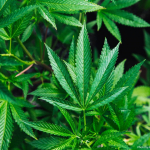At this point, the medical use of cannabis is legal in 37 states and the District of Columbia (D.C.). The recreational use of cannabis has been legalized in 21 states and D.C. The downstream effect of these changes has been a significant uptick in the use of cannabis among women of childbearing age. According to data collected from the National Survey on Drug Use and Health, the use of cannabis in pregnant women rose from 2.37% in 2002 to 3.85% in 2014 in the United States, noting that 21.1% of pregnant women who used cannabis reported doing so on a daily basis.
While we have data to indicate that the use of cannabis during pregnancy may negatively affect fetal growth and brain development, we have less information on how the cannabis and its byproducts, which are secreted into the breast milk, may affect the nursing infant. Here are some important things we do know:
Can cannabis be found in breast milk?
No matter how marijuana/cannabis is consumed (smoking, vaping, or ingesting), its byproducts can be found in the breast milk. Figuring out how much is passed into the breast milk is complicated because how women use cannabis varies considerably. For example, the kinetics of smoking vary considerably from ingesting. Both cannabidiol (CBD) and the psychoactive component, delta-9-tetrahydrocannabinol or THC, have been detected in breast milk.
If cannabis is consumed, how long does it persist in the breast milk?
Cannabis concentrations in breast milk are variable and are related to maternal dose and the frequency of use, as well as how the cannabis is consumed. However, there are some things that make cannabis a little different than alcohol or other recreational drugs. Cannabis and its byproducts are very fat-soluble or lipophilic. Because in women the percentage of body fat is 25-30%, there is a large reservoir for the storage of cannabis. What this means is that it takes much longer for cannabis to leave one’s system, compared to substances like alcohol. Furthermore, there is an especially long washout period in those who have been daily users. Long after the psychoactive effects have faded, THC and its metabolites can be detected in the blood, urine, and breast milk of mothers who have used cannabis.
Studies focusing on the detection of THC in milk have yielded variable results, with duration of detection ranging from 6 days to greater than 6 weeks in various studies. T A study from Wymore and colleagues collected data on self-reported use of marijuana and measured levels of THC in maternal plasma and breast milk samples several times a week. In all 25 participants reporting marijuana use, THC was detectable in breast milk throughout the six week duration of the study.
The researchers estimated the mean half-life of THC in breast milk to be about 17 days (SD 3.3). Based on this estimate, they calculated that it would be possible to detect THC in breast milk for longer than 6 weeks in some users. In addition, the researchers were able to calculate a milk:plasma partition coefficient for THC, which was approximately 6:1. The Milk:plasma ratios give us a sense of how easily a compound passes from the mother’s bloodstream into the breast milk and can be used to estimate the amount of exposure through breast milk. Most M:P ratios for drugs commonly used in breastfeeding women are around 1 or less than 1; thus, an M:P ratio for THC of 6 is high and suggests that levels of THC in the breast milk may be higher than in the mother’s bloodstream.
The longevity of THC in the breast milk may be related, in part, to the extremely high fat content of breast milk and the lipophilic nature of THC, so that the breast milk “traps” the THC, in a sense acting like a reservoir for THC storage.
What are the effects of exposure to cannabis in the nursing infant?
There are conflicting data regarding the outcomes of infants exposed to cannabis during breastfeeding and very few studies have focused on child outcomes. These studies are not easy to conduct. First of all, recreational use of cannabis continues to be illegal in many states, and thus research on cannabis use is prohibited in many areas. Furthermore, it is difficult to disentangle the direct effects of cannabis delivered in the breast milk from the indirect effects of cannabis on the quality of childcare and parenting, especially in heavy, chronic users or when cannabis is combined with other substances.
In one study (Whymore et al, 2021), 136 breastfeeding infants were assessed at one year of age. In the 68 infants exposed to cannabis during the first month of life, there was evidence of decreased motor development at one year, when compared with matched infants who were not exposed to cannabis. Specifically, there was a 1465-point decrease in the Bayley index of infant motor development. However, the authors of this study cannot conclude that these findings were entirely due to exposure via breastfeeding, as many of the women also used marijuana during pregnancy.
In a study including 50 women who reported using cannabis in the previous 14 days, THC was detectable in the breast milk of 66% of the mothers and was below the limit of quantification in 32% (Bertrand et al, 2020). The researchers observed no differences in infant adverse reactions, growth, or neurodevelopmental outcomes between the groups with quantifiable THC versus those with non-quantifiable THC levels in breastmilk.
In another study (Tennes et al, 1985), 27 breastfed infants exposed to cannabis were compared to 35 unexposed breastfed infants. At one year, no differences were noted for motor and mental development using the Bayley Scales of Infant Development. However, the small size of this study limited statistical analysis.
So the jury is still out regarding the effects of cannabis on the nursing infant.
Clinical Recommendations
All women should be screened for drug use as a component of standard prenatal care. Screening for substance use should occur during the course of pregnancy with the goal of providing information regarding the potential adverse effects of cannabis and to ensure referral to appropriate resources for treatment as needed. Because many women are able to abstain from substances during pregnancy but resume use after delivery, screening must be repeated during the postpartum period.
Both the American College of Obstetricians and Gynecologists (ACOG) and the American Academy of Pediatrics recommend that women refrain from using cannabis during pregnancy and while breastfeeding. Because of the persistence of cannabis and its byproducts in the breast milk for days to weeks, using cannabis and waiting for it to clear out of the breast milk is not a viable option in terms of limiting exposure. For women who use cannabis for medical indications, alternative therapies with more safety data during breastfeeding should be considered.
While we continue to support and encourage exclusive breastfeeding in women for children up to one year of age, this recommendation must include information regarding the use of cannabis and other substances while breastfeeding. According to a recent study, the majority of mothers delivering in an urban hospital in the US were aware that marijuana use while breastfeeding may be harmful to their infant; however, only 4% of those women received counseling from their health care providers about the risks of marijuana use while breastfeeding (Crowley et al, 2022).
Ruta Nonacs, MD PhD
References
Cannabis: Drugs and Lactation Database (LactMed)
Bertrand K, Borchelt J, Honerkamp-Smith G, et al. Infant adverse reactions, postnatal growth and neurodevelopmental outcomes in infants and toddlers breastfed by mothers who use marijuana. Birth Defects Res 2020;112:876.
Crowley HR, Goyal NK, Chung EK. Marijuana and Breastfeeding: A Pilot Survey of Mothers. Hosp Pediatr. 2022 Jul 1;12(7):e255-e260.
Mourh J, Rowe H. Marijuana and Breastfeeding: Applicability of the Current Literature to Clinical Practice. Breastfeed Med. 2017 Dec;12(10):582-596.
Metz TD, Borgelt LM. Marijuana Use in Pregnancy and While Breastfeeding. Obstet Gynecol. 2018 Nov;132(5):1198-1210. This article is free online and a very good review of this topic.
Ordean A, Kim G. Cannabis Use During Lactation: Literature Review and Clinical Recommendations. J Obstet Gynaecol Can. 2020 Oct;42(10):1248-1253.
Tennes K, Avitable N, Blackard C, et al. Marijuana: Prenatal and postnatal exposure in the human. NIDA Res Monogr. 1985;59:48–60.
Wymore EM, Palmer C, Wang GS, Metz TD, Bourne DWA, Sempio C, Bunik M. Persistence of Delta-9-Tetrahydrocannabinol in Human Breast Milk. JAMA Pediatr. 2021 Mar 8.







Leave A Comment